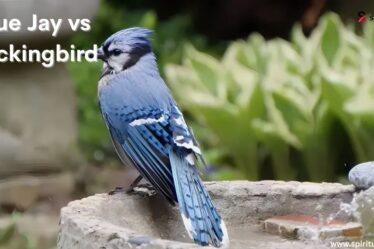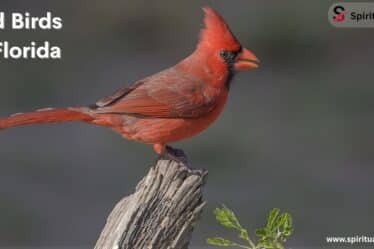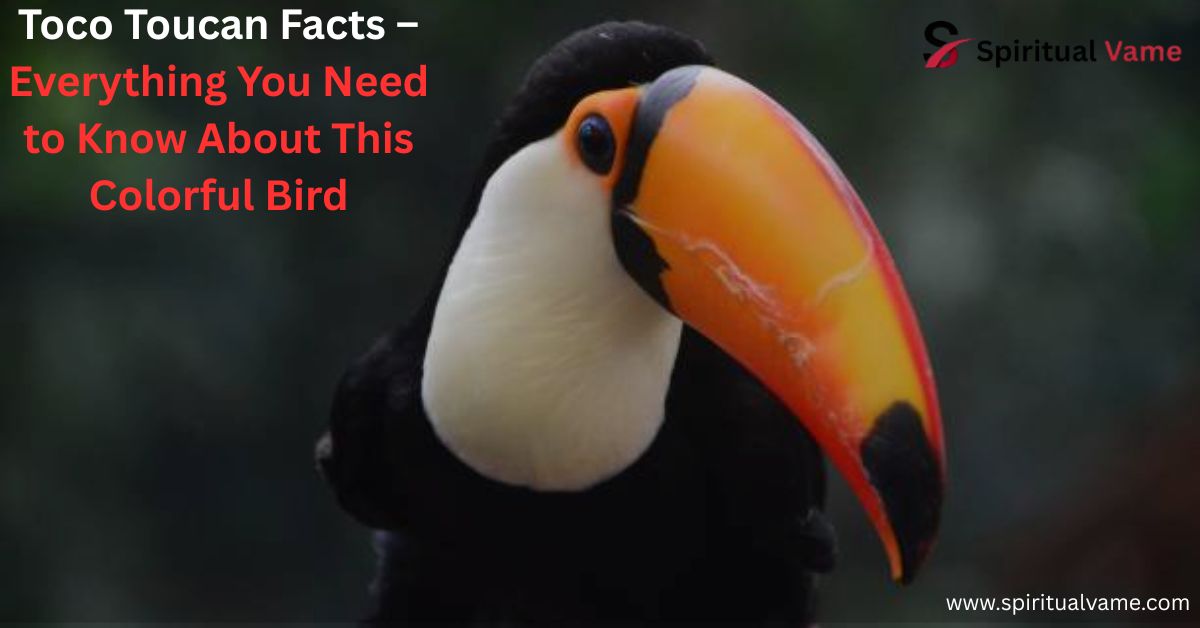
The Toco Toucan, also known scientifically as Ramphastos toco, is a striking bird that attracts attention with its bright colors and enormous bill. This member of the Ramphastidae family is native to parts of South and Central America, making it a well-known symbol of tropical rainforests. Whether you’re interested in its feeding habits, unique characteristics, or the way it interacts with its environment, the Toco Toucan has a fascinating array of traits that make it one of the most iconic birds in the avian world. Below, we will delve into the most interesting facts about the Toco Toucan.
Toco Toucan
The Toco Toucan (Ramphastos toco) is one of the largest and most easily recognizable species in the toucan family. It is found throughout the tropical regions of South America, including countries such as Brazil, Bolivia, and Paraguay, as well as the Guianas and parts of Argentina and Uruguay. The bird is often spotted in the dense rainforests, savannas, and woodlands, thriving in environments where there are plenty of trees and fruits. As a member of the Piciformes order, the Toco Toucan is closely related to woodpeckers and honeyguides.
What truly sets the Toco Toucan apart from other birds is its massive, colorful bill. This bill is not just for show – it helps with feeding, communication, and even regulating body temperature. Despite the bill’s large size, it is surprisingly lightweight, thanks to its hollow structure. The vibrant colors of the beak, along with the bird’s black body and white chest, make the Toco Toucan a visual marvel, making it a favorite in zoos and wildlife documentaries like those from National Geographic and Great Big Story.
Toco Toucan Beaks
The bill of the Toco Toucan is not just one of its most recognizable features but also a crucial tool for its survival. Measuring up to 8 inches in length, the bill helps the bird reach and collect fruits from trees that might otherwise be out of reach. This large beak is also used to defend itself against predators, and it plays a role in attracting mates during the breeding season. Toco Toucans use their beaks for vocalization as well, producing unique sounds that range from grunts to croaks, which help them communicate with others of their kind.
Interestingly, while the bill may seem cumbersome, it is an essential adaptation for this species. The lightweight nature of the beak, combined with its ability to help with feeding and temperature regulation, demonstrates how well adapted the Toco Toucan is to its environment. The bill’s vibrant hues – often orange, yellow, and black – may also play a role in camouflage within the leafy canopy, breaking up the bird’s outline among the branches. It’s a perfect example of how nature uses color for both functionality and beauty.
Bad Fliers?

Despite its large wings, the Toco Toucan is not particularly graceful in the air. This bird prefers short, gliding flights rather than sustained flying, and it often hops or glides from one tree to another. Its wings are relatively short compared to the size of its body, making it a poor flier compared to many other birds. However, Toco Toucans are well adapted to living in the dense forests and rainforests of South America, where they are more likely to move through the trees rather than travel long distances in the open sky. This behavior is typical of many members of the Ramphastidae family, which are often more skilled in hopping and gliding than in continuous flight.
This characteristic of poor flight may seem limiting, but it works well in the Toco Toucan’s environment, where trees and shrubs provide ample space to move around without needing to take flight for long stretches. It’s also worth noting that the Toco Toucan’s lifestyle in the rainforest canopy means it’s usually surrounded by plenty of food sources and shelter, making lengthy migrations unnecessary.
What Toco Toucans Eat
Toco Toucans are primarily frugivores, meaning that their diet consists mostly of fruits, berries, and seeds. However, they are also opportunistic feeders, occasionally eating insects, small lizards, and even eggs. Their diet is crucial to the health of their environment, as they act as seed dispersers, helping to spread seeds from the fruits they consume. This process, known as zoochory, benefits the plants by helping with germination and the growth of new plants in the forest.
In addition to fruits like guava, figs, and Cecropia, Toco Toucans will also forage for insects such as beetles and caterpillars. Their large bills are perfect for reaching fruiting branches high in the trees, allowing them to access a variety of food sources that might be out of reach for other species. The Toco Toucans are also known to consume some flowers, particularly those of trees like Inga laurina and Royostenia oleracea, which further diversifies their diet.
Toco Toucan Nests
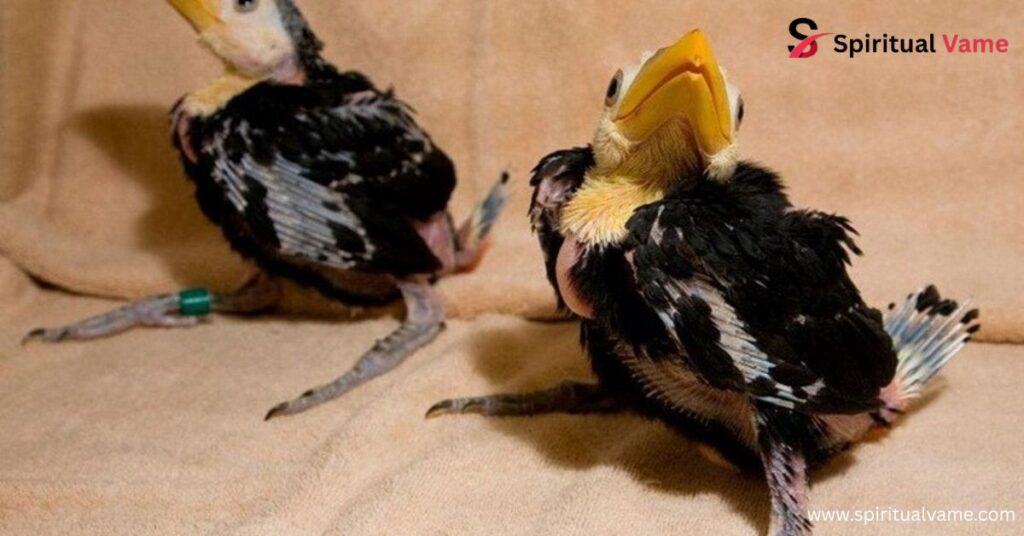
Toco Toucans are cavity-nesting birds, meaning they prefer to make their homes in tree hollows or abandoned woodpecker nests. These cavities provide a safe and protected space for the birds to lay their eggs and raise their young. The Toco Toucan does not build its own nest from scratch but instead takes advantage of existing tree hollows, termite mounds, or the cavities left behind by other animals. This behavior is common among many species of toucans, which often prefer the safety and security of these natural shelters.
The choice of a cavity also helps protect the eggs and chicks from predators like snakes, weasels, and birds of prey. Toco Toucans will typically use the same cavity for multiple breeding seasons, ensuring a steady and reliable nesting site. These nests are often located in the upper canopy of the rainforest, which helps protect the young from ground-based threats.
Toco Toucan Reproduction
Reproduction in Toco Toucans involves a series of complex behaviors, from courtship to incubation. During the mating season, male Toco Toucans will perform courtship displays, which include offering food to the female and showing off their vibrant bills. Once a pair forms, they work together to find and prepare a suitable nesting cavity. The female will lay a clutch of two to four eggs, which she incubates with the help of the male.
The incubation period typically lasts between 16 to 18 days, after which the eggs hatch into altricial chicks – that is, they are born blind and helpless. The parents take turns feeding and protecting the chicks until they are ready to leave the nest, which usually happens around two months after hatching. Toco Toucans are monogamous, forming strong bonds with their mates and working together to care for their offspring.
11 Things You Didn’t Know About Toucans
1. Toucans Make Many Noises
Toco Toucans are known for their wide range of vocalizations, including croaks, grunts, and tapping sounds. These sounds are used to communicate with others, establish territory, and even attract mates.
2. They Come From a Big Family
Toco Toucans are part of the Ramphastidae family, which includes many other species of toucans. This family is diverse, with different species adapting to various environments across the Americas.
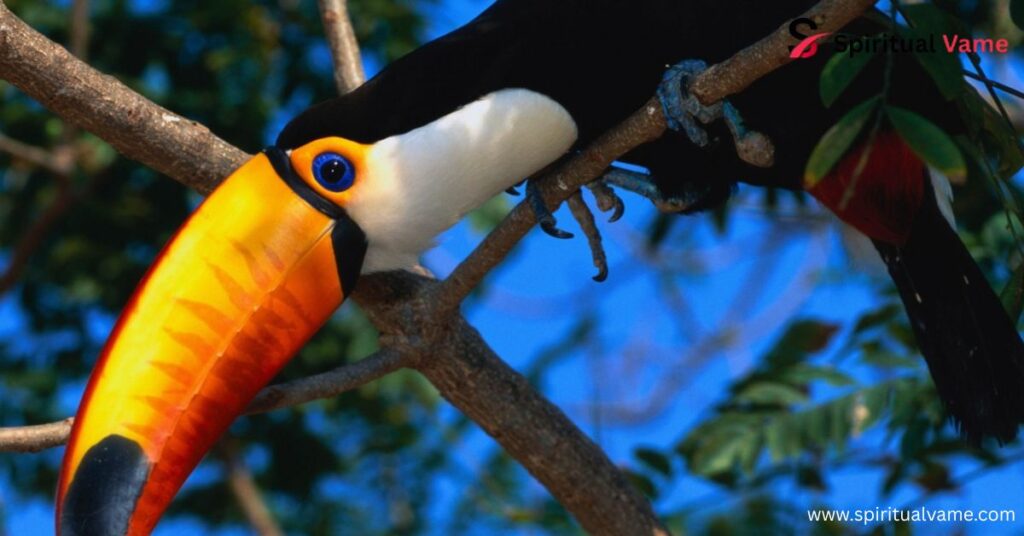
3. They Use Their Bills in Numerous Ways
Beyond eating, Toco Toucans use their bills for balance, communication, and even defense. The bill is essential to their daily activities.
4. Toucans Aren’t Graceful in the Sky
Toco Toucans are not strong fliers. Instead, they are better at hopping and gliding through the trees, a behavior suited to their forested habitat.
5. They Live in the Rainforest Canopies
These birds are typically found in the upper layers of the rainforest, where they forage for food and build their nests in tree hollows.
6. Toucan Size May Vary
While the Toco Toucan is one of the largest, other toucan species can be much smaller, adapting to different environments.
7. Toucans Are Sociable
Toco Toucans are social creatures, often found in small groups. They engage in playful activities and share food.
8. They Face Threats in the Wild
The Toco Toucan faces various threats, including deforestation, the pet trade, and habitat loss. These challenges have led to conservation efforts to protect the species.
9. They Nest in Tree Hollows
As cavity-nesting birds, Toco Toucans prefer tree hollows over building traditional nests, providing their young with safety and security.
10. Toucans Are Monomorphic
Male and female Toco Toucans look alike, with no noticeable sexual dimorphism, which is uncommon in many bird species.
11. They Help Rainforests
By dispersing seeds, Toco Toucans play a vital role in maintaining the health and biodiversity of the rainforest ecosystem.
Conclusion
The Toco Toucan is a fascinating bird, well adapted to life in the dense rainforests of South America. With its vibrant beak, unique feeding habits, and vital role in seed dispersal, it continues to capture the imagination of birdwatchers and nature enthusiasts alike. Understanding the life and habits of the Toco Toucan not only helps us appreciate this incredible species but also highlights the importance of conserving the rainforests that are crucial to its survival.

